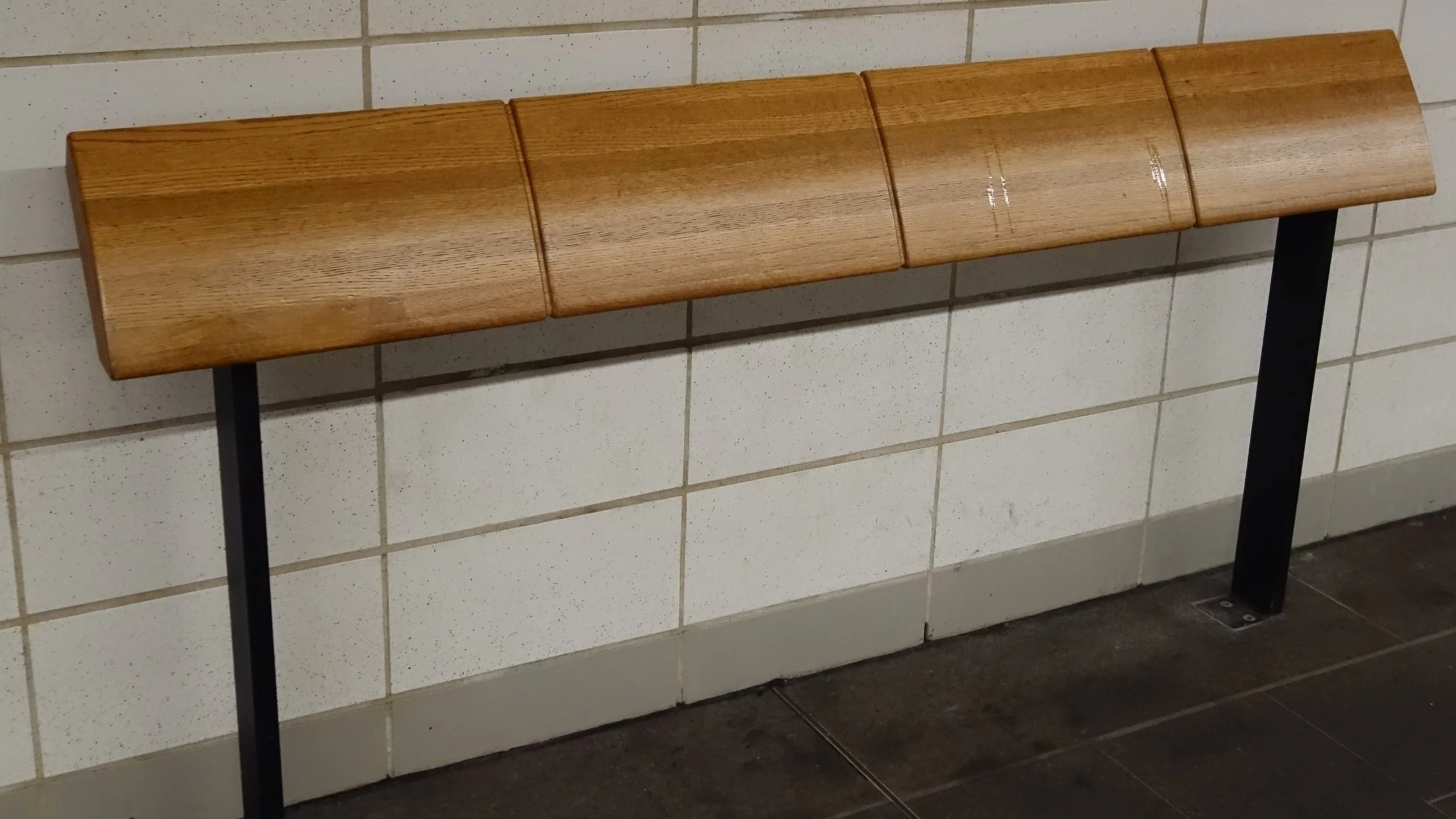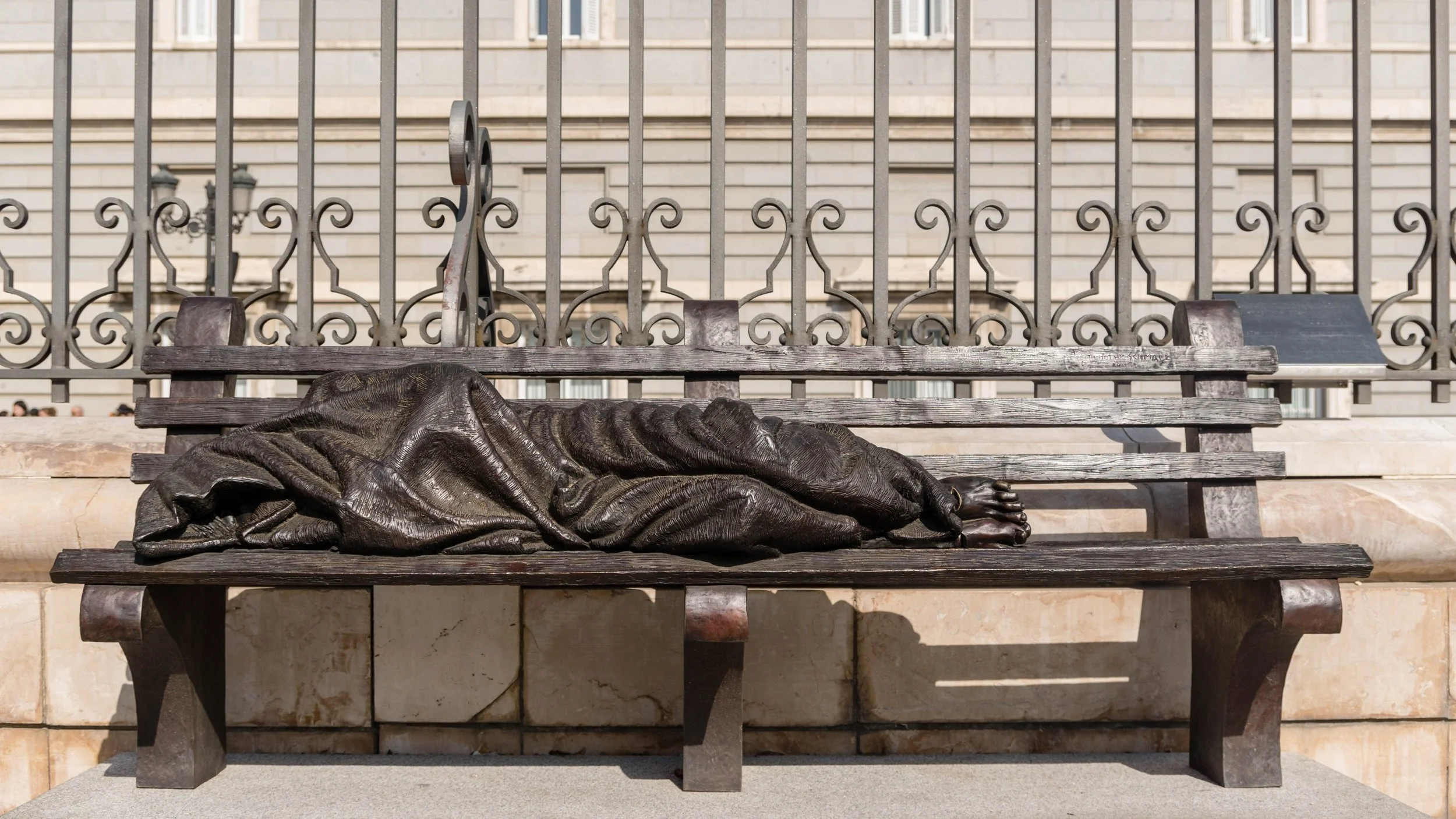Hostile Architecture and Erosion of Empathy
By Steve Lemeshko
Across cities worldwide, hostile architecture has become a pervasive urban design choice intended to deter specific groups from using public spaces. Its main purpose is not functionality but exclusion.
Take the city of San Francisco, for example. Older bus stop models once had glass backs that protected from the wind. Today, they have been replaced with metal bars and poorly placed armrests that make even a brief rest uncomfortable. In wealthier, whiter neighborhoods, stops offer shelter, seating, and real-time arrival data. In poorer, more diverse areas, you’re lucky to find a bench at all. In the Tenderloin, after sprinklers installed to harass the homeless were removed, the omnipresent planters and fences took their place, framed as “beautification efforts” but meant to keep tents and people off the sidewalks. It wasn’t just city policy; residents joined in. On Clinton Park, local homeowners placed boulders on the sidewalk to deter camping, a measure later reversed by the city.
Hostile architecture takes many subtle yet unmistakable forms. But once you start noticing it—dividing armrests, leaning “benches,” and fences around public areas—you can’t unsee it.
Anti-homeless spikes. Credit: Paydah, CC-BY-SA-4.0.
Anti-homeless bench. Credit: Laurie Avocado, CC BY 2.0.
Leaning “bench.” Credit: Tdorante10, CC BY-SA 4.0.
These designs, primarily intended to discourage homeless people from resting or gathering, introduce an uncomfortable irony: by making spaces less hospitable, they often harm the very communities public areas are meant to serve. Marginalized groups—the elderly, disabled, pregnant, and homeless—face barriers to comfort and access, transforming public spaces that are meant for everyone into symbols of exclusion and disregard.
The gradual but devastating impact of these changes can be understood through the lens of slow violence, a concept introduced by Rob Nixon. Unlike immediate, explosive violence, slow violence unfolds over years or decades, making it harder to perceive and respond to. The slow violence of hostile architecture subtly erodes community well-being and reinforces the social stratification of urban spaces.
In cities grappling with homelessness, shelters are often full, yet the urban response is to treat homelessness as a “nuisance” rather than a crisis, addressing its effects rather than its roots. The physical design of these public areas reflects a troubling shift in social priorities, where compassion is often sidelined in favor of sanitized aesthetics. Such approaches might stem from ignorance, but they contribute to the collective social numbing toward the homeless.
This is part of what researchers call psychic numbing—a collective insensitivity that diminishes our empathy for those impacted by hostile architecture. So how do we respond? One way is to reintroduce empathy—visually, emotionally, and narratively. Take, for example, the “Homeless Jesus” sculpture by Timothy Schmalz. When displayed in cities, the statue depicting a figure in a blanket lying on a bench had mixed reactions: within 20 minutes of its installation, someone called the police on it. Yet this is precisely the power of such an installation to challenge public perceptions: seeing “Jesus” as a homeless person invites viewers to confront their biases and reflect on the humanity of marginalized individuals.
Homeless Jesus. Credit: Derek Winterburn, CC BY-ND 2.0.
Perhaps it is time for Homeless Jesus to make a stop in many of our cities.
The impact of hostile architecture extends beyond people. Many cities install anti-bird spikes to deter birds from roosting on ledges, windowsills, and streetlights.
Credit: Todd Baker, CC BY 2.0.
But nature, as it often does, adapts: birds have begun repurposing these spikes, weaving them into nests. This adaptive use shows that even designs meant to exclude can be reclaimed, reshaping them into symbols of resilience.
A bird nest constructed with anti-bird spikes. Credit: Alexander Schippers/Naturalis Biodiversity Center.
That image should give us pause. If birds can reclaim hostile architecture and repurpose it toward care, what’s stopping us? What would it mean to build cities not around exclusion, but around dignity? Not as an afterthought, but as a foundational value?
We don’t need more barriers; we need a shift in priorities. Instead of crafting barriers, we could invest in compassionate, practical solutions that address the homelessness crisis and respect the dignity of all. Through empathy and community-focused design, we have the opportunity to reclaim public spaces as places for everyone, restoring a sense of shared humanity in our cities.
For further reading on poverty and homelessness, see the following articles:
Poverty Retold: Why Narratives Matter for Economic Mobility / October 31, 2019
“Songs to Affect and Balance the World”: Poetry, Place, Home / April 25, 2019
Open Your Eyes / September 11, 2018






